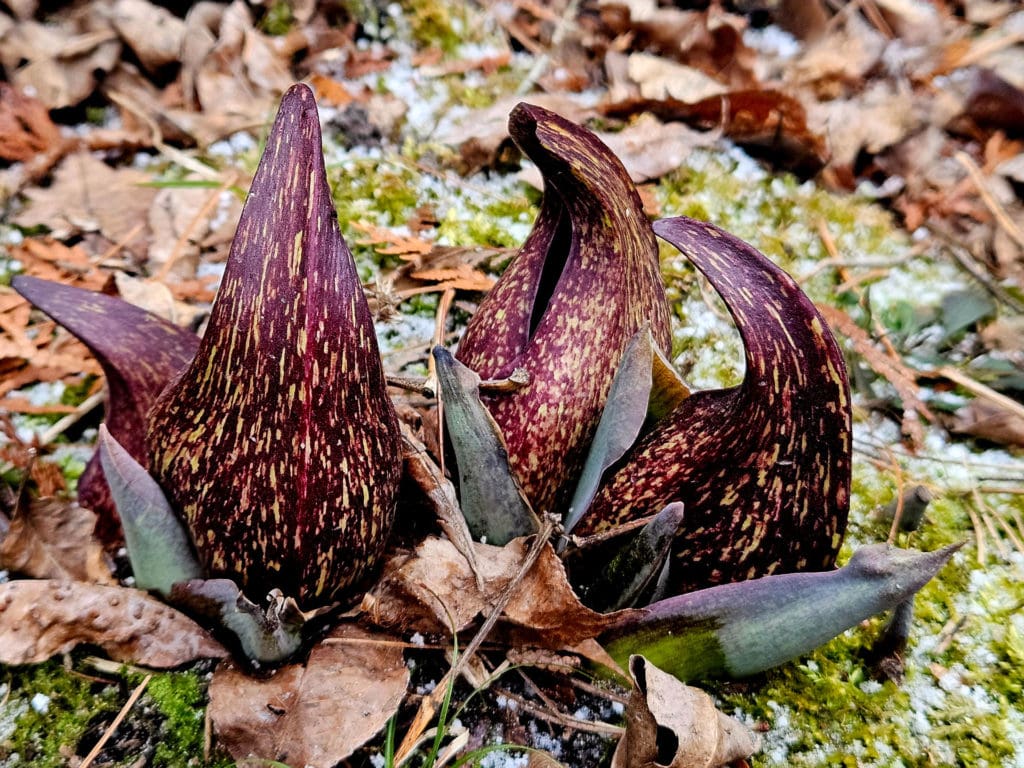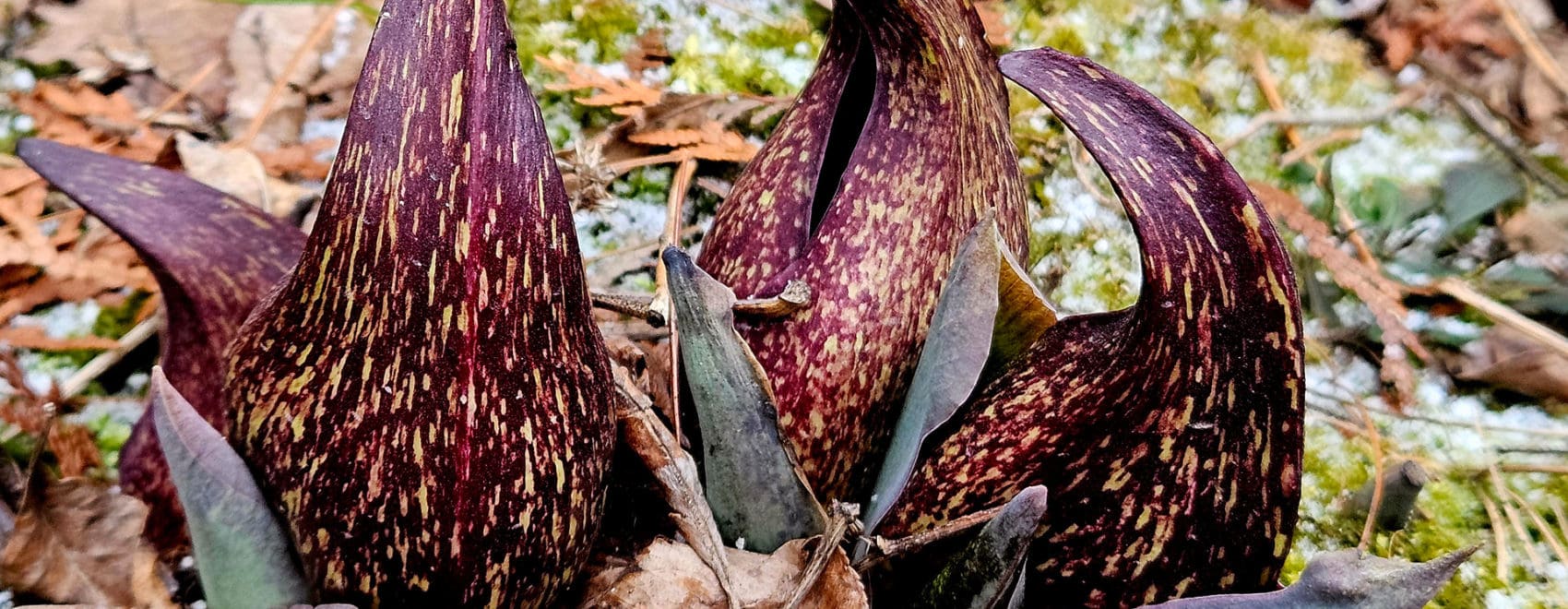Written by Sydnee Jerome, Summer Intern
Growing up, I disliked springs in New York. The unpredictable weather associated with the end of a long, cold winter always bogged down my mood in anticipation of the warm days of late spring.

Needless to say, I was not a child who liked getting muddy or being outside in the slush. As I have grown older, however, and ventured into the wonderful world of wetlands, I have found a quiet beauty in the often undesirable seasonal transitions.
If you walk into a wetland in late February, you may expect to see blankets of snow with the occasional evergreen plant. However, you may be surprised to see a strange reddish purple plant peeking through the snow, seemingly pushing the cold away from itself. Spring ephemerals are a welcomed surprise and a clear sign that spring is coming, despite how long the cold transition may seem. Skunk cabbage (Symplocarpus foetidus) is the first spring ephemeral to appear in northeastern and upper Midwest wetlands, forming rings of melted snow as they push above ground.
Their early arrival can be attributed to their ability to produce heat, otherwise known as thermogenesis. With the ability to maintain an internal temperature of over 50 ˚F, they possess a clear fitness advantage, monopolizing the barren herbaceous layer of swamps and riparian areas when no other species can produce or maintain flowers.
However, their appearance diverges significantly from that of a traditional flower. More specifically, their inflorescence follows a spadix and spathe flower type, an identifying characteristic of the arum family: Araceae. The spadix refers to a fleshy, spike-like ball covered in small flowers, while the spathe is the hood that protects the flowers within. Skunk cabbage is distinctly mottled red, purple, and/or green, providing a stark contrast in winter landscapes. While it may not model traditional flowers, its color and
form serve a significant ecological role, attracting pollinators such as flies, beetles, and bees.
Furthermore, if the scientific name is deconstructed, we can parse out one of its most prominent characteristics and key pollination strategy: its odor. Symplocarpus refers to its connected ovaries, while foetidus refers to its foul-smelling leaves and flowers. Now, you may ask just how bad it can smell, and to that, I say, take a walk in a wetland once its produces large dense leaves and inhale deeply. Once crushed, they produce a distinct smell resembling garlic or carrion. While this smell may not seem comforting, I have witnessed the joy of a wetland botanist discovering the area’s first annual bloom — that alone eases any qualms about the smell.
Now every spring, I follow in my professors’ footsteps, searching for the first signs of our native wildflowers. I look forward to hearing from my professors and friends about their first sightings of skunk cabbage, the news sparking energy and prompting me to go on a hike, braving the cold winds and slippery ground of our local wetlands. While they may not be the most beautiful spring flower and their smell overpowers the nose of many, their arrival awakens energy lost in the winter and indicates that spring has
finally started its arrival.

